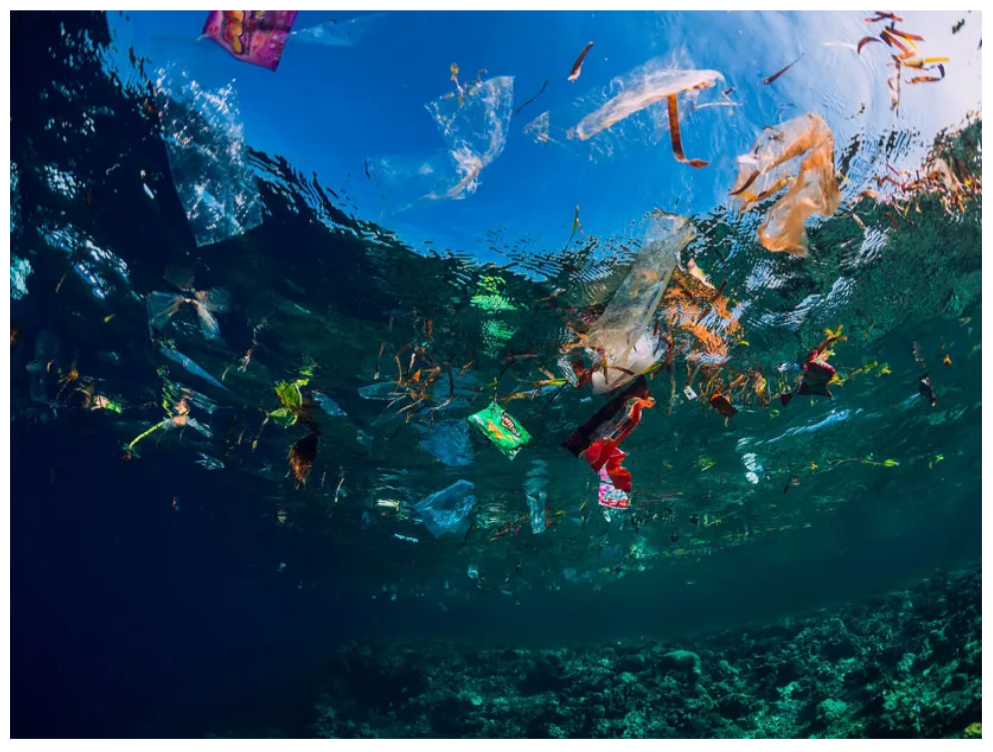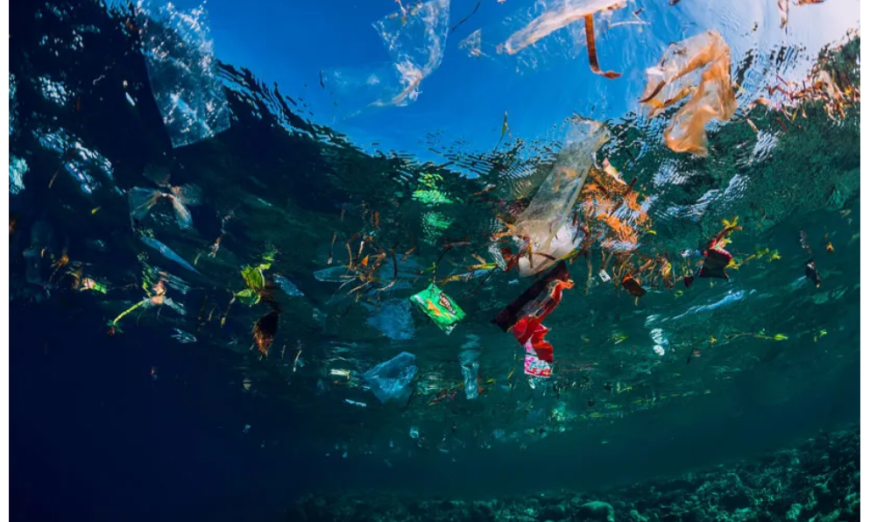Researchers used a wave tank to study the movement of plastic particles experimentally and to understand the role of particle density in drift behavior.
Written by Kate Wheeling.
At least 8 million tons of plastic waste wind up in the ocean annually, collecting in great swirling patches on the surface and even sinking to the deepest depths. Researchers know that most of this plastic litter originates on land, but it is less clear how it moves around in the coastal zone, where ocean waves meet the beach.
In a new study, Alsina et al. built on previous theoretical work considering wave-induced particle drift with an experimental setup. The team used a 16-meter-long flume with a wave-generating paddle at one end and a beach section to dissipate waves at the other.
The researchers first released plastic particles between 4 and 12 millimeters wide—on par with some of the most common pieces of ocean litter—and with different densities into still water. They then generated nonbreaking waves with varying periods and steepness and tracked the 3D trajectories of the particles to find out how changes in size and density affected wave-induced transport.
In the experimental setup, most of the particles tended to move on the surface of the water or close to the bed, although the authors note that under real-world conditions, particles would likely be more distributed in the water. The team found that the relative density of the particles and their location within the water column had the largest influence on drift behavior. Particles on the surface tended to move shoreward, pushed by the action of Stokes drift. Sunken particles also moved shoreward along the seabed, transported by the wave boundary layer motion.
Further research is needed to understand the behavior of plastic particles in the surf and swash zone. But the authors note that the study provides an experimental look at physical principals driving plastic behavior in the shallow coastal zone, a critical step for future work to combat marine pollution.

(Journal of Geophysical Research, Oceans.)
Author, Kate Wheeling, Science Writer.
Wheeling, K. (2020), Tracking how plastic moves in the coastal ocean, Eos,
Published on 21 December 2020, Courtesy Eos. The original publisher.

